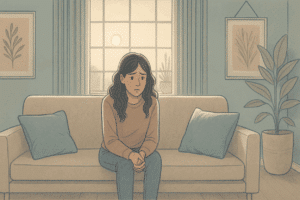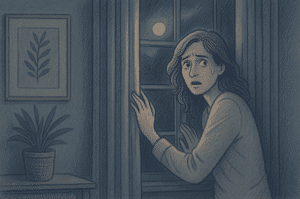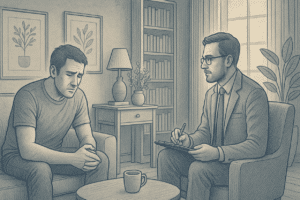Key Takeaways
- Delusional disorder and schizophrenia are distinct mental health conditions, with delusional disorder featuring persistent delusions without the hallucinations, thought disorders, and negative symptoms common in schizophrenia.
- Delusional disorder typically develops later in life (middle adulthood) while schizophrenia often emerges earlier (late teens to early 30s), with the age of onset being a key diagnostic differentiator.
- People with delusional disorder often maintain better daily functioning and social connections than those with schizophrenia, despite their firmly held false beliefs.
- Understanding the differences between these disorders is crucial for proper diagnosis, effective treatment planning, and reducing stigma around psychotic spectrum conditions.
- At A Mission for Michael, our comprehensive assessment process ensures accurate differentiation between these complex conditions through thorough clinical evaluation, medical screening, and longitudinal observation.
Spotting Key Mental Disorders
Mental health conditions exist on a spectrum, with some sharing overlapping symptoms while remaining distinctly different diagnoses. Delusional disorder and schizophrenia are two conditions that fall under the psychotic spectrum but have important differences in presentation, impact, and treatment approaches. Both conditions involve some degree of disconnection from reality, but the extent, manifestation, and impact on daily functioning vary significantly.
Psychotic disorders affect approximately 3% of the population and cause significant distress for those experiencing them. While they share certain features, the specific symptom patterns help clinicians differentiate between diagnoses. This distinction isn’t merely academic, it directly impacts treatment decisions, prognosis discussions, and the support systems needed for recovery.
| A Mission For Michael: Expert Mental Health Care Founded in 2010, A Mission For Michael (AMFM) offers specialized mental health care across Southern California, Washington, and Virginia. Our accredited facilities provide residential and outpatient programs, utilizing evidence-based therapies such as CBT, DBT, and EMDR. Our dedicated team of licensed professionals ensures every client receives the best care possible, supported by accreditations from The Joint Commission and the California Department of Health Care Services. We are committed to safety and personalized treatment plans. Start your recovery journey with AMFM today! |
Delusional Disorder Explained
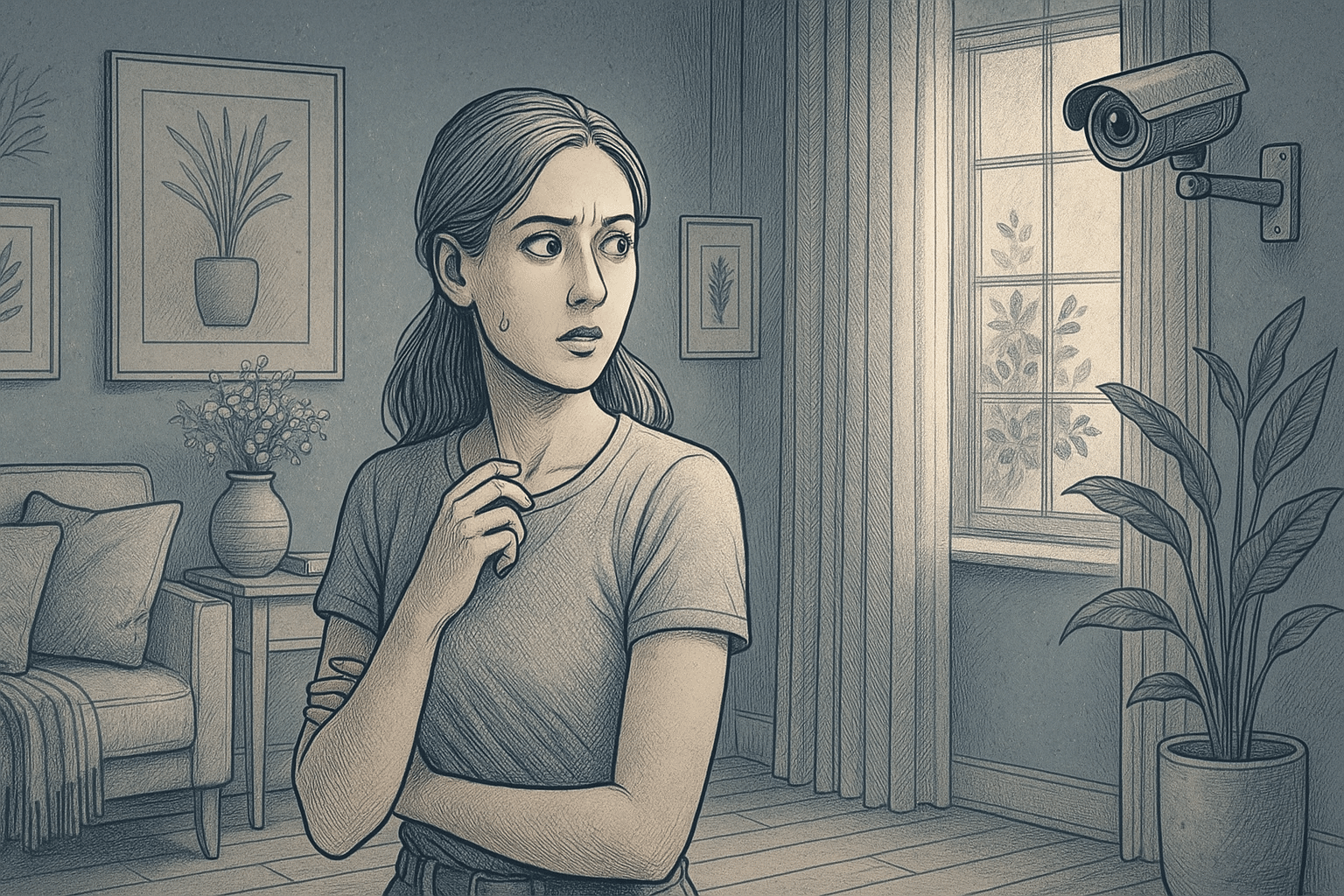
Delusional disorder is when a person begins to hold onto one or more delusional beliefs. Like someone plotting against them.
Delusional disorder is characterized by the presence of one or more delusions that persist for at least 1 month. What makes this condition distinct is that apart from the impact of the delusion(s), the person’s functioning is not markedly impaired, and behavior isn’t obviously odd or bizarre.
People with delusional disorder often maintain their regular daily activities, social relationships, and work responsibilities, even while firmly holding false beliefs. The DSM-5 (Diagnostic and Statistical Manual of Mental Disorders) classifies this condition separately from schizophrenia precisely because of this relatively preserved functioning.
Core Symptoms
The major symptom of delusional disorder is the presence of non-bizarre delusions, false beliefs that could theoretically occur in real life. These delusions are firmly held despite clear evidence to the contrary. Unlike in schizophrenia, hallucinations are either absent or not prominent, and if present, they’re directly related to the delusional theme. People with this disorder don’t typically show the disorganized speech, disorganized behavior, or negative symptoms that are common in schizophrenia.
Types of Delusions
Delusional disorder presents in several subtypes, each characterized by the content of the primary delusion. The persecutory type is most common, where individuals believe they are being conspired against, spied on, or targeted for harassment. The jealous type involves the false belief that one’s romantic partner is unfaithful, often leading to confrontations, stalking behaviors, or domestic conflicts. Erotomanic delusions center on the false belief that someone, often of higher social status, is in love with the individual.
Somatic delusions involve false beliefs about bodily functions or sensations, such as believing one has a severe illness despite medical evidence to the contrary, or that one’s body is somehow deformed or emitting foul odors. The grandiose type features delusions of inflated worth, power, knowledge, or a special relationship to a deity or famous person. Mixed type delusional disorder presents with two or more types of delusions without any one theme predominating.
Understanding these subtypes helps clinicians tailor treatment approaches to address the specific nature of a person’s delusions.
Real-Life Examples
Consider a 47-year-old accountant who maintains her career and family responsibilities while firmly believing that government agencies are monitoring her through electronic devices. She functions well at work, maintains friendships, and cares for her children, yet she takes elaborate precautions like covering electronics with aluminum foil and speaking in code on telephones. Her delusion is contained to this specific area, allowing her to maintain normal functioning in most aspects of life.
Understanding Schizophrenia
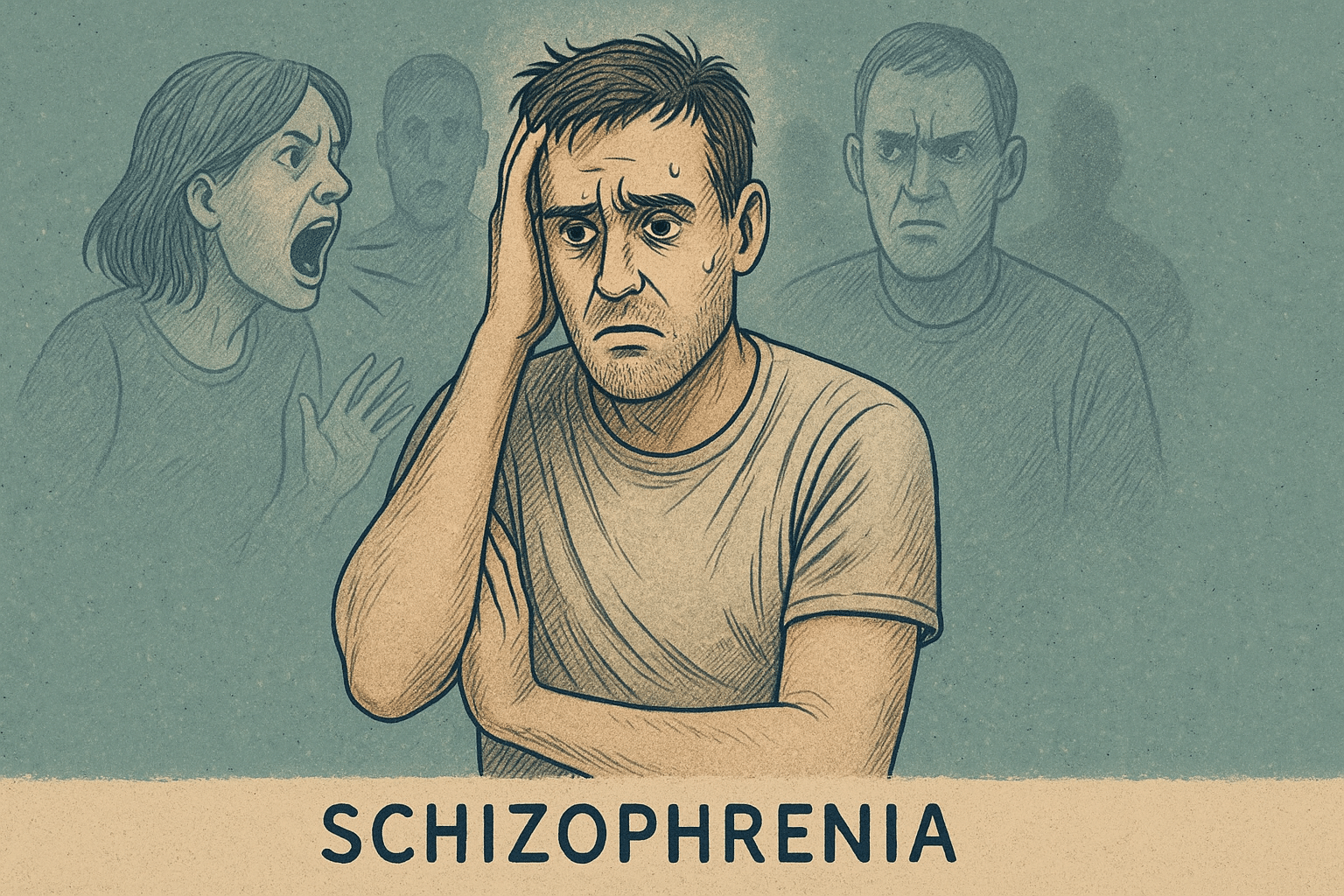
Schizophrenia represents a more complex and typically more severe condition than delusional disorder.
As a chronic brain disorder, schizophrenia affects approximately 0.32% of the population worldwide and impacts virtually all aspects of a person’s psychological functioning, including perception, thinking, emotion, and behavior. Unlike delusional disorder, schizophrenia presents with a broader range of symptoms that significantly impair daily functioning and often requires more intensive treatment interventions.
The condition typically manifests in late adolescence to early adulthood, with men often showing symptoms earlier than women. This earlier onset (compared to delusional disorder) represents one of the key distinguishing features between the two conditions.
Hallucinations
Unlike delusional disorder, hallucinations are a central feature of schizophrenia. These false sensory perceptions occur without external stimuli and can affect any of the senses, though auditory hallucinations are most common. Individuals may hear voices commenting on their behavior, carrying on conversations, or giving commands. These voices often have a negative or threatening quality, adding significant distress to the experience.
Visual hallucinations (seeing things that aren’t there), tactile hallucinations (feeling sensations like insects crawling on the skin), olfactory hallucinations (smelling odors others can’t detect), and gustatory hallucinations (experiencing unusual tastes) can also occur. The presence of prominent hallucinations, particularly when they’re not related to the content of delusions, strongly suggests schizophrenia rather than delusional disorder.
Thought Disorders
Thought disorders represent another key feature of schizophrenia that is typically absent in delusional disorder. These manifest as disorganized thinking and speech patterns that make communication difficult. Common manifestations include loose associations (rapidly shifting between unrelated topics), tangentiality (being unable to maintain a goal-directed thought sequence), and word salads (severely disorganized and incomprehensible speech). The presence of formal thought disorder significantly impairs social and occupational functioning.
In addition to disorganized thinking, many individuals with schizophrenia experience thought blocking (sudden interruption of thought), thought insertion (believing others are placing thoughts in their mind), thought withdrawal (believing thoughts are being removed from their mind), and thought broadcasting (believing others can hear their thoughts). These experiences reflect a fundamental disruption in the sense of ownership and control over one’s own thoughts, a symptom dimension rarely seen in delusional disorder.
Negative Symptoms
Negative symptoms represent a loss or decrease of normal functions and are prominent in schizophrenia but not typically seen in delusional disorder. These include diminished emotional expression (reduced facial expressions and vocal tone), avolition (decreased motivation to pursue meaningful goals), alogia (reduced speech output), anhedonia (decreased ability to experience pleasure), and asociality (reduced interest in social interactions). Negative symptoms often persist even when positive symptoms like hallucinations and delusions are controlled with medication.
These negative symptoms frequently contribute more to long-term disability than positive symptoms, affecting quality of life, employability, and relationship formation. Many individuals with schizophrenia struggle with basic self-care, maintaining housing, or securing employment due to these symptoms.
Major Differences
| Feature | Delusional Disorder | Schizophrenia |
| Core Symptoms | Non-bizarre delusions (theoretically possible, e.g., being followed/having an illness). Hallucinations/thought disorders are absent or minimal. | Bizarre delusions (e.g., mind control), hallucinations, thought disorders, negative symptoms (flat affect), cognitive impairments. |
| Onset Age | Middle adulthood (40s–50s); late-onset (>45) common. Rare before age 18. | Late adolescence/early adulthood (teens–30s); early-onset (<18) possible. Women often develop later than men. |
| Functional Ability | Normal functioning in areas unrelated to delusions (work, relationships, daily tasks). Impairment limited to delusion impact. | Pervasive impairment: Disrupts education, employment, relationships, and self-care. Prevents skill development. |
| Reality Testing | Intact except for delusional content. Can conceal beliefs socially and perceive most environmental/social cues accurately. | Pervasive impairment: Difficulty distinguishing hallucinations from reality, identifying “inserted” thoughts, or recognizing unusual behavior. |
| Insight | Poor insight regarding delusions but retains awareness of other health/functioning aspects. May accept partial treatment. | Global lack of insight; rejects illness concept and treatment needs. Unaware of behavioral/social abnormalities. |
Diagnostic Process
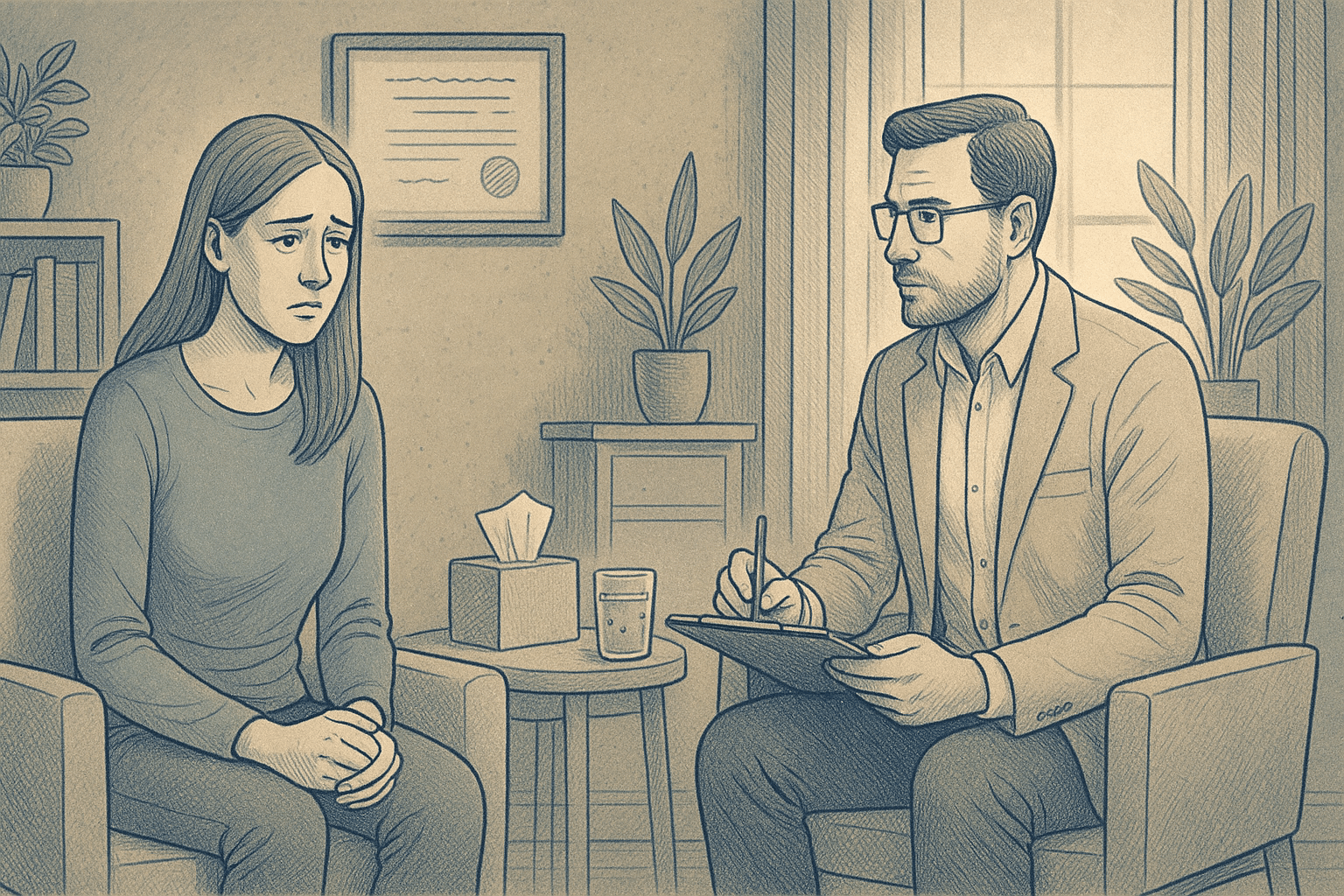
Accurate diagnosis of delusional disorder and schizophrenia requires a comprehensive assessment by qualified mental health professionals.
A good diagnostic process involves multiple evaluations and information sources to ensure accurate differentiation between these conditions. Neither condition can be diagnosed through laboratory tests or brain scans alone, making clinical assessment particularly important.
The diagnostic process typically begins with a thorough clinical interview exploring symptom history, development, and impact on functioning. Collateral information from family members or close friends often provides crucial insights, particularly since individuals with these conditions may lack awareness of certain symptoms or their severity. This multi-informant approach helps build a more complete clinical picture.
Treatment Approaches for Delusional Disorder and Schizophrenia
Medication Options
Antipsychotic medications form the foundation of pharmacological treatment for both disorders. For schizophrenia, these medications are considered essential and are typically prescribed at standard therapeutic doses. Both first-generation (typical) and second-generation (atypical) antipsychotics are effective for positive symptoms, though second-generation agents may offer advantages for negative and cognitive symptoms with fewer extrapyramidal side effects.
For delusional disorder, antipsychotic medications are also first-line treatments, though response rates may be lower than in schizophrenia. Lower doses are often effective, and some individuals benefit from targeted use of antidepressants, particularly for certain subtypes like somatic delusional disorder.
Therapy Strategies
Psychotherapeutic approaches differ somewhat between these conditions based on symptom profiles and cognitive capabilities. For schizophrenia, evidence-based interventions include Cognitive Behavioral Therapy for psychosis (CBTp), social skills training, cognitive remediation, and family psychoeducation. These approaches target specific symptom domains and functional impairments, with CBT helping individuals develop more adaptive responses to hallucinations and delusions, and cognitive remediation addressing the cognitive deficits that often limit functional recovery.
For delusional disorder, cognitive approaches must be modified to accommodate the typically fixed nature of delusions. Direct confrontation of delusional beliefs usually strengthens resistance, so therapeutic approaches focus instead on building trust, addressing functional consequences of the delusions, and gradually introducing alternative perspectives.
Family Support
Family involvement is crucial for effective treatment of both conditions, though the nature of this involvement may differ. For schizophrenia, structured family interventions have demonstrated significant benefits in reducing relapse rates and improving outcomes. These programs typically include psychoeducation about the illness, communication skills training, problem-solving strategies, and crisis management planning. Given the often earlier onset and more significant functional impairment in schizophrenia, families frequently provide substantial practical support and care coordination.
Understanding Delusional Disorder vs Schizophrenia with AMFM
At A Mission For Michael, we understand that these conditions, while both involving psychotic symptoms, require distinctly different therapeutic strategies and support systems.
Our comprehensive diagnostic approach recognizes that delusional disorder’s circumscribed nature allows for better functional preservation, while schizophrenia’s broader symptom profile requires more intensive, multifaceted intervention.

We understand that recovery is a personal journey and provide a conducive environment that aids the treatment process of each individual.
What sets us apart is our commitment to personalized care that addresses each individual’s unique presentation rather than applying rigid diagnostic categories. Our experienced clinicians across California, Virginia, and Washington provide culturally sensitive assessments and evidence-based treatments customized to specific symptom profiles and functional needs.
If you’re struggling with persistent false beliefs or experiencing broader psychotic symptoms, our specialized programs provide the expert care needed for meaningful recovery. Contact AMFM today to learn how our comprehensive approach can help you navigate these complex conditions with dignity and hope.
Frequently Asked Questions (FAQ)
Can someone have both delusional disorder and schizophrenia?
While diagnostic categories present these conditions as distinct entities, the clinical reality is often much more complex. Some individuals present with symptoms that don’t neatly fit into either category, showing primarily non-bizarre delusions (suggesting delusional disorder) but also mild thought disorder or occasional hallucinations (suggesting schizophrenia). In such cases, clinicians must use their judgment to determine which diagnosis best captures the overall clinical picture.
Which condition has better treatment outcomes?
Overall, delusional disorder generally shows better functional outcomes than schizophrenia, though symptom improvement may actually be more challenging. Individuals with delusional disorder typically maintain better social and occupational functioning, independent living skills, and quality of life. For schizophrenia, treatment outcomes vary widely, with some individuals achieving substantial symptom remission and functional recovery while others experience persistent symptoms and disability despite intensive treatment.
Can these conditions develop after traumatic events?
For delusional disorder, specific psychosocial stressors, including traumatic events, often precede symptom onset and may contribute to the development of delusional beliefs as attempts to make sense of distressing experiences. For schizophrenia, the relationship with trauma is more complex. While trauma does not directly cause schizophrenia, which has strong genetic and neurodevelopmental components, research indicates that childhood trauma and adverse experiences increase the risk of developing psychotic disorders.
What makes AMFM’s approach to treating these conditions unique?
At A Mission For Michael, we understand that treatment strategies must be customized to each condition’s specific symptom profile, using trust-building and indirect approaches for delusional disorder while employing more comprehensive interventions for schizophrenia.
Our experienced clinicians across California, Washington, and Virginia provide culturally sensitive assessments and personalized treatment plans that address each individual’s unique symptoms, functional goals, and support needs rather than applying one-size-fits-all approaches.

